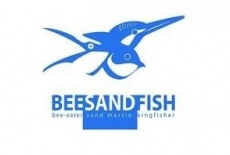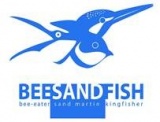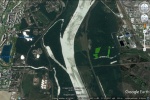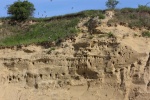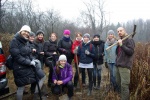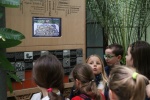Conservation of Sand Martin, Kingfisher and European Bee-eater in Danube - Morava region - LIFE12 NAT/SK/001137
Project BeeSandFish is focused on restoration of nesting and feeding habitats of three endangered bird species: European Bee-eater, Kingfisher and Sand Martin. A common feature of the ecology of these species is the use of natural riverbanks and walls for nesting. Project activities are linked with Natura 2000 sites around the rivers Danube and Morava – specifically with SPA Dunajské luhy, Záhorské Pomoravie, Dolné Pohronie, Dolné Považie and Parížske močiare. Implementation of restoration measures as re-establishing a water regime of particular river branches or the whole river branch system of Danube, restoration of vertical riverbanks, wetlands and also reintroducing grazing livestock along the river will create suitable living conditions for these interesting bird species.
Kingfisher (Alcedo atthis) needs non-regulated rivers and river branches with a mosaic of running and stagnant water, vertical natural river banks without concrete or stone fortification, trees or shrubs overhanging on the river banks are used for patrolling - waiting for an opportunity to catch food from water.
Sand Martin (Riparia riparia) needs steep clay, loess or sand banks without stone and concrete fortification for nesting (similar to Kingfisher) and non-regulated rivers and river shoulders with natural water dynamics which would be due to fluctuations in water level creating new exposed river banks. It feeds on small insects near water or in adjacent meadows and pastures.
In the past, most breeding sites of Kingfisher and Sand martin (steep banks) tiled with stone fortification and reduced flow dynamics had rarely allowed natural erosion of the banks of the Danube and its river shoulders. Proposed project activities (e.g. the restoration of steep river banks and water regime of selected shoulder systems) will significantly improve nesting and feeding opportunities for both species.
European Bee-eater (Merops apiaster) uses vertical loess or clay – sand walls/river banks for nesting. It feeds mainly on hymenopterous insect nearby marshes or in meadows and pastures. Since Bee-eater feeds on honeybees in case of the absence of other food, their nesting sites become a target of attacks of uninformed beekeepers.
The aim of the project is to restore Bee-eater nesting sites for example by removing young trees and vegetation in degraded parts of the former nesting sites as well as their protection during the breeding season (from illegal sand mining or other illicit intervention). For better food source offer the wetlands and meadows/pastures will be restored what will create a suitable habitat for many species of hymenopterous insect.


